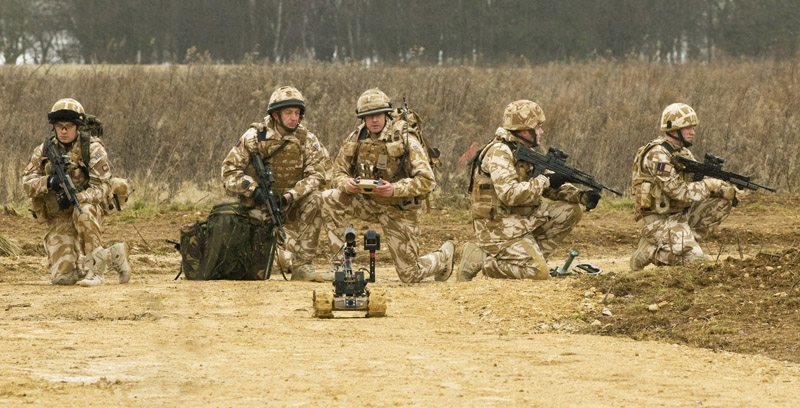Secure roads, safe lines of communication and freedom of movement are crucial for the safety of both soldiers and civilians in Afghanistan. Several Allies are working together to identify the best equipment for route clearance operations, including remote-controlled robots. This is one of a package of multinational ‘Smart Defence’ projects launched at NATO’s Chicago Summit in 2012.
Improvised explosive devices (IEDs) are the weapon of choice for insurgents. According to the NATO-led International Security Assistance Force (ISAF) in Afghanistan, IEDs caused more than 70 per cent of civilian casualties from January to November 2012.
“In Afghanistan, we have learned how important it is to protect our forces against roadside bombs,” said NATO Secretary General Anders Fogh Rasmussen, addressing the press at Chicago. “So a number of Allies will jointly acquire remote-controlled robots which can clear such bombs – protecting our forces and civilians alike.”
A challenging mission
“The risks associated with route clearance missions are very high,” explains Dr Franco Fiore, Head of the Intelligence, Surveillance and Reconnaissance Sensor Group at NATO Communications and Information Agency (NCI).
Not only do route clearance missions seek to neutralise mines along roads and trails – they are often ambushed by insurgents close to sites where IEDs have been placed. Frequently, units are called upon to execute the much more complex task of ‘clearance-in-zone operations’, when the area has to be cleared of enemies before route clearance can be conducted.
Route clearance requires mobility and maneuverability, as well as the joint efforts of experts in countering IEDs, the disposal of explosive ordnance and dealing with chemical, biological, radiological and nuclear materials.
Detection equipment such as metal detectors, video cameras installed on vehicles or unmanned vehicles are commonly used, as are dogs. Capabilities that can further identify and confirm the threat – including TALON robots and hydraulic arms installed on Buffalo armored vehicles – are also required.
Other factors that have to be taken into account when procuring equipment include the terrain, seasonal weather, the level of infrastructure, insurgent threats, and the type of IEDs.
Transitioning to Afghan lead for security
ISAF is increasingly focused on training, advising and assisting the Afghan national security forces, who are expected to assume full security responsibility for their people and country by the end of 2014.
Route clearance is one of many areas in which training is being offered by ISAF and individual nations. However, route clearance operations involve costs that have to be supported by a nation or a group of nations. Another major challenge is the need to make available to Afghan security forces essential intelligence and IED threat analyses.
“During this transition period, one of the first steps would be that the Afghan government and various NATO nations sign agreements to provide this support on a bilateral basis,” says Dr Cristian Coman, Senior Scientist at NCI.
Getting smart about procurement
Route clearance operations vary from nation to nation. Some involve military search teams, combat engineers and explosive ordnance disposal teams; others have specialized route clearance teams. But non-specialized approaches pose a high risk to troops on the ground.
“That is the reason why we need a route clearance package, which is a specialized set of engineering equipment and vehicles designed to perform the route clearance mission,” concludes Fiore. The Smart Defence project for the procurement of robots that was endorsed at Chicago Summit in 2012 will support this.
Based on experience gained in Afghanistan, the project will identify the best remote-controlled robots for route clearance operations to avoid exposing military personnel to explosive devices. It will also promote joint procurement of state-of-the-art equipment and facilitate multinational cooperation on deployment.
Such pooling and sharing of resources – ‘Smart Defence’ – is crucial to counter the effects of cuts in national defence budgets in these times of financial austerity.










